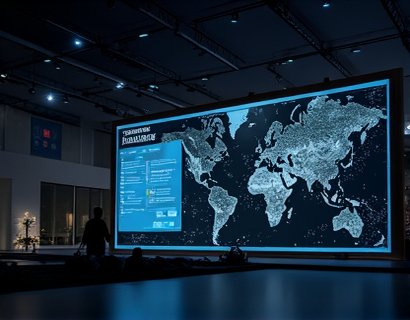Streamlining Web Development with Custom Placeholder Code Generators
In the fast-paced world of web development, efficiency and productivity are paramount. One innovative solution that has gained traction among developers, designers, and business owners is the custom placeholder code generator. This tool is designed to save time and enhance efficiency by providing customizable templates that can be used to generate placeholder website code. The primary goal is to create professional and visually appealing content without the hassle of manual coding, ensuring that the website design is both functional and attractive.
The concept of using placeholder code is not new, but the advancement in technology has made it more accessible and user-friendly. Traditionally, developers would spend a significant amount of time creating dummy content to test layouts and designs. With a custom placeholder code generator, this process is automated, allowing professionals to focus on more critical aspects of web development.
Benefits of Using Placeholder Code Generators
One of the most significant advantages of using a placeholder code generator is the time savings. Instead of writing code from scratch, developers can quickly generate a basic structure with dummy content. This allows for faster prototyping and iteration, which is crucial in today's competitive market where time-to-market is a key differentiator.
Another benefit is the consistency and professionalism that placeholder code provides. The generators can produce code that adheres to best practices and design standards, ensuring that the placeholder content looks polished and professional. This is particularly important for clients who want to see a realistic preview of their future website.
How Placeholder Code Generators Work
Placeholder code generators typically offer a range of customization options to suit different needs. Users can choose from various layouts, color schemes, typography, and content types. For instance, a generator might allow you to select a grid layout, a single-column layout, or a more complex multi-column design.
The customization extends to the content itself. Users can choose between different types of dummy text, such as Lorem ipsum, which is a standard placeholder text used in the industry, or more relevant content that mimics the actual content that will be used on the live site. Some advanced generators even allow for the inclusion of images, buttons, and other interactive elements.
Tools for Different User Groups
Placeholder code generators are versatile tools that cater to a wide range of users, including web developers, designers, digital agencies, tech startups, and e-commerce businesses. Each group can benefit in unique ways:
- Web Developers: Can quickly test and iterate on designs without writing extensive boilerplate code.
- Designers: Can focus on visual aspects and user experience without getting bogged down by coding details.
- Digital Agencies: Can provide clients with realistic previews faster, enhancing client satisfaction and project efficiency.
- Tech Startups: Can prototype their ideas rapidly, saving resources and accelerating the development process.
- E-commerce Businesses: Can create placeholder stores to showcase designs and gather feedback before final development.
Enhancing Creativity and Collaboration
The use of placeholder code generators not only saves time but also enhances creativity and collaboration. Designers can experiment with different layouts and styles without the constraints of coding. This freedom to explore various design options can lead to more innovative and user-friendly interfaces.
For teams working on a project, placeholder code generators facilitate better collaboration. Developers and designers can work in parallel, with designers creating the visual layout and developers focusing on the functionality. The generators ensure that both parties have a consistent reference point, reducing miscommunications and errors.
Integration with Development Workflows
Integrating placeholder code generators into existing development workflows is straightforward. Most generators provide output in common formats such as HTML, CSS, and even JavaScript, making it easy to incorporate the placeholder content into existing projects. This seamless integration means that developers can pick up where they left off, without significant disruptions.
Additionally, many generators offer plugins or extensions for popular development environments like Visual Studio Code, WebStorm, and GitHub, further enhancing their utility. These integrations allow for a more streamlined workflow, where placeholder code can be generated directly within the developer's preferred tools.
Maintaining Quality and Professionalism
While placeholder code is designed to be a temporary solution, it is crucial to maintain a high level of quality and professionalism. Generators that produce well-structured and aesthetically pleasing code help in achieving this goal. For example, using a generator that adheres to responsive design principles ensures that the placeholder content looks good on all devices, from desktops to mobile phones.
Moreover, some advanced generators allow for the inclusion of accessibility features, such as alt text for images and semantic HTML, which are essential for creating inclusive web experiences. By focusing on these details, developers and designers can ensure that their placeholder content sets a strong foundation for the final product.
Case Studies and Real-World Applications
To better understand the impact of placeholder code generators, let's look at a few real-world applications:
A digital agency was tasked with creating a new landing page for a client. Using a placeholder code generator, the team quickly set up a responsive grid layout with dummy text and sample images. This allowed the designer to focus on the visual design while the developer worked on the interactive elements. The client was impressed with the quick turnaround and the professional look of the placeholder, leading to a faster approval process and a more efficient development cycle.
Another example is a tech startup that used a placeholder code generator to prototype their e-commerce platform. The generator provided a basic structure with product cards, a shopping cart, and a checkout process. The startup team could then refine the design and add functionality layer by layer, using the placeholder as a guide. This approach significantly reduced the initial development time and allowed them to gather valuable user feedback early in the process.
Best Practices for Using Placeholder Code Generators
To maximize the benefits of placeholder code generators, here are some best practices to follow:
- Choose a generator that offers a wide range of customization options to ensure the placeholder matches your vision.
- Use high-quality placeholder images and text to maintain a professional appearance.
- Ensure the generated code is responsive and accessible to cater to a broader audience.
- Regularly update the placeholder content to reflect changes in the final design.
- Collaborate closely with team members to align the placeholder with the overall project goals.
Conclusion
Custom placeholder code generators are powerful tools that can significantly streamline the web development process. By providing quick, customizable, and professional placeholder content, these tools enable developers, designers, and business owners to focus on what truly matters—creating exceptional user experiences. Whether you're a solo developer, part of a digital agency, or leading a tech startup, incorporating a placeholder code generator into your workflow can lead to more efficient projects and higher client satisfaction.











































